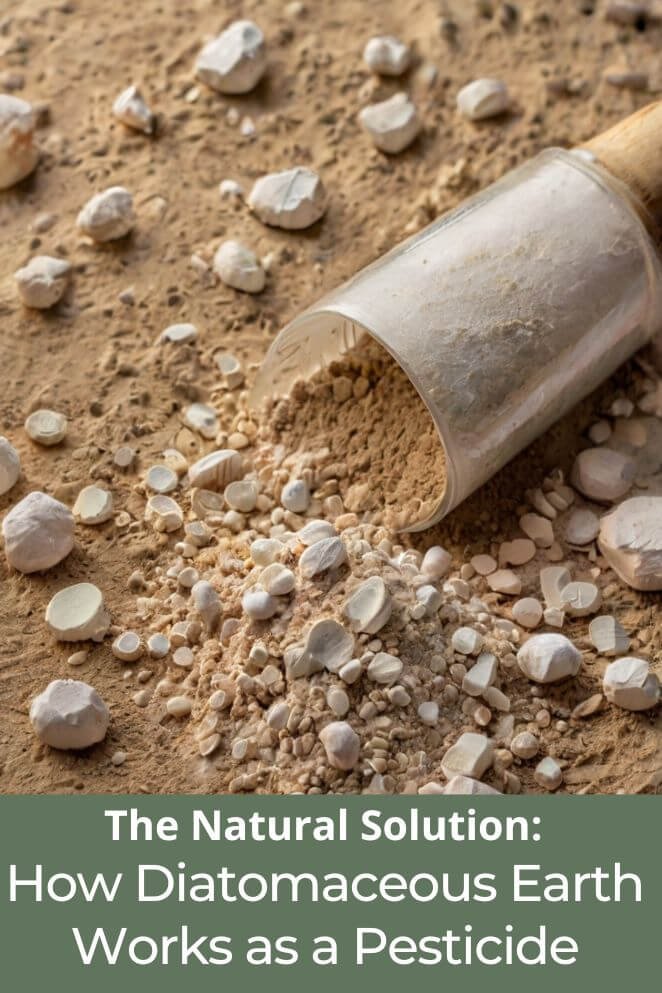
Pests in your garden or home can be a real nuisance.
While chemical pesticides are effective, they often come with environmental and health risks.
Enter diatomaceous earth, a natural alternative that’s gaining popularity among eco-conscious gardeners and homeowners.
In this article, we’ll explore what diatomaceous earth is, how it works, its benefits, and how to use it safely and effectively.
What is Diatomaceous Earth?
Diatomaceous earth (DE) is a natural substance made from the fossilized remains of tiny algae called diatoms.
These algae had hard, glassy shells that, over time, turned into a soft, powdery rock rich in silica.
When ground into a fine powder, DE has a range of uses:
- Food-grade supplements: DE is sometimes used in health supplements for its silica content, which supports healthy skin, hair, and nails.
- Industrial Filtration: Its powdery texture helps filter liquids and gases, making it useful in water purification and other industrial processes.
- Natural pesticide: DE acts as a non-toxic insecticide by dehydrating pests like ants and fleas, making it a safe option for pest control.
In short, diatomaceous earth is a versatile material with applications in health, industry, and natural pest control.
How Does Diatomaceous Earth Work?
Diatomaceous earth (DE) acts as a natural insecticide by using a physical, rather than chemical, method to control pests. Here’s how it works:
Mechanical action
DE is made up of tiny particles with sharp, microscopic edges.
When insects come into contact with DE, these sharp edges scratch and cut through their exoskeletons, which is the hard outer shell of the insects.
- Read also: A Comprehensive Guide: Natural Pesticides for Vegetable Garden
- Read also: Nurturing Your Orchard: Natural Pesticides for Fruit Trees
Dehydration
The damage to the exoskeleton causes the insects to lose moisture.
Without their protective outer layer, they dehydrate quickly and die.
This process is effective because it targets the physical structure of the insect rather than poisoning it.
Broad-spectrum effectiveness
Unlike chemical pesticides, which can lead to pests developing resistance over time, DE kills insects through its physical properties.
This means it can be effective against a wide range of insects and is less likely to contribute to resistance.
Safety and environmental impact
Because DE works mechanically, it doesn’t rely on chemicals that can be harmful to humans, pets, or the environment.
It’s a safe and natural option for pest control.
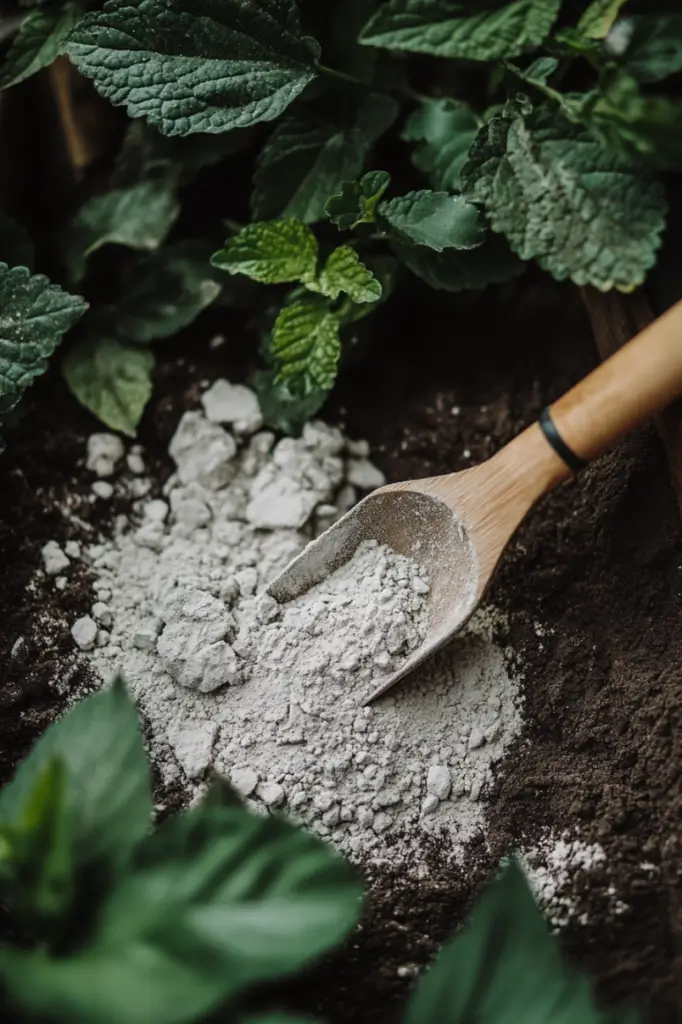
Benefits of Using Diatomaceous Earth
Diatomaceous earth (DE) offers several advantages as a pest control solution.
Here’s why it’s a great choice:
Safe for humans and pets
One of the biggest benefits of DE is that it’s non-toxic and safe to use around people and animals.
Food-grade DE is harmless to pets and children, making it a worry-free option for families.
Environmentally friendly
DE is a natural substance that’s kind to the environment.
Unlike chemical pesticides, it breaks down naturally and doesn’t leave behind harmful residues.
This makes it an eco-friendlier choice for pest control.
Effective against many pests
DE is versatile and works against a variety of pests.
Whether you’re dealing with ants, bed bugs, fleas, cockroaches, or other insects, DE can be an effective solution.
Its ability to target a wide range of pests makes it a useful tool for many pest problems.
Long-lasting protection
As long as DE stays dry, it remains effective for a long time. It doesn’t lose its potency quickly, unlike some chemical pesticides that may need frequent reapplication.
This means DE can provide extended protection against pests.
Affordable
DE is cost-effective compared to many chemical pesticides.
It’s relatively inexpensive, and a small amount can go a long way.
This makes it a budget-friendly option for keeping pests at bay.
Common Pests Controlled by Diatomaceous Earth
DE is effective against a variety of pests. Here are some common ones:
- Ants: Sprinkle DE along ant trails and entry points to eliminate these persistent pests.
- Bed bugs: Dust DE on mattresses, bed frames, and cracks where bed bugs hide.
- Fleas: Apply DE to pet bedding, carpets, and furniture to control flea infestations.
- Cockroaches: Spread DE in areas where cockroaches are found, such as kitchens and bathrooms.
- Slugs and snails: Use DE around plants to protect them from these garden pests.
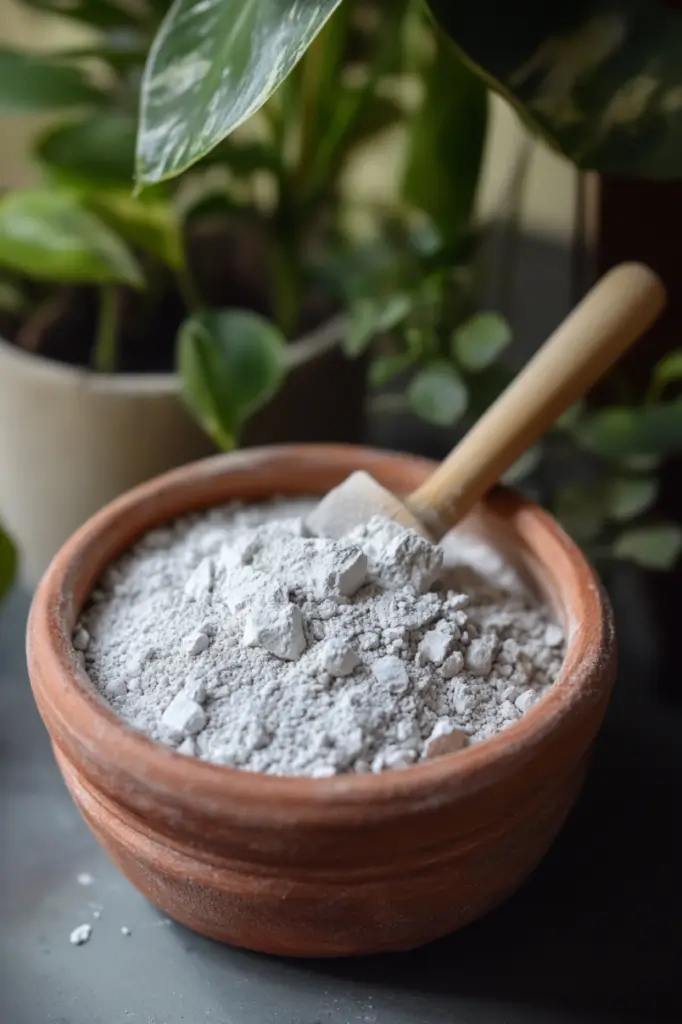
How to Use Diatomaceous Earth
Diatomaceous earth (DE) can be a highly effective tool for managing pests when used correctly.
Here’s a detailed guide on how to use it effectively:
Identify problem areas
Start by pinpointing where the pests are most active.
Look for areas where you’ve seen the most signs of pests, such as trails, nests, or droppings.
For indoor use, focus on spots like baseboards, under appliances, and around entry points where insects might be coming in.
Outdoors, check garden beds, around plants, and on leaves where pests might be feeding.
By targeting these areas, you ensure that DE is applied where it will have the most impact.
Apply DE
Indoor
For indoor applications, lightly dust DE in the identified problem areas.
You can use a dust applicator, which allows for a more controlled and even distribution of the powder.
If you don’t have an applicator, a spoon or similar tool can work, but be careful not to apply too much, as a thin layer is usually sufficient.
Outdoor
For outdoor use, sprinkle DE around the base of plants and directly on the leaves where pests are active.
It’s best to apply DE on a dry day because moisture can reduce its effectiveness.
If you apply DE when the ground or plants are wet, it may become less effective, so make sure the area is dry for the best results.
Reapply as needed
DE’s effectiveness can be diminished by water, so it’s important to reapply it after watering your garden or after it rains.
Keeping DE dry ensures that it continues to work effectively.
Regular reapplication helps maintain pest control and ensures that DE remains effective over time.
Use safety gear
While DE is non-toxic, it’s still a good idea to take precautions when applying it.
Wear a mask to avoid inhaling the fine powder and use gloves to protect your skin from irritation.
This is especially important if you’re applying DE in large quantities or over extended periods.
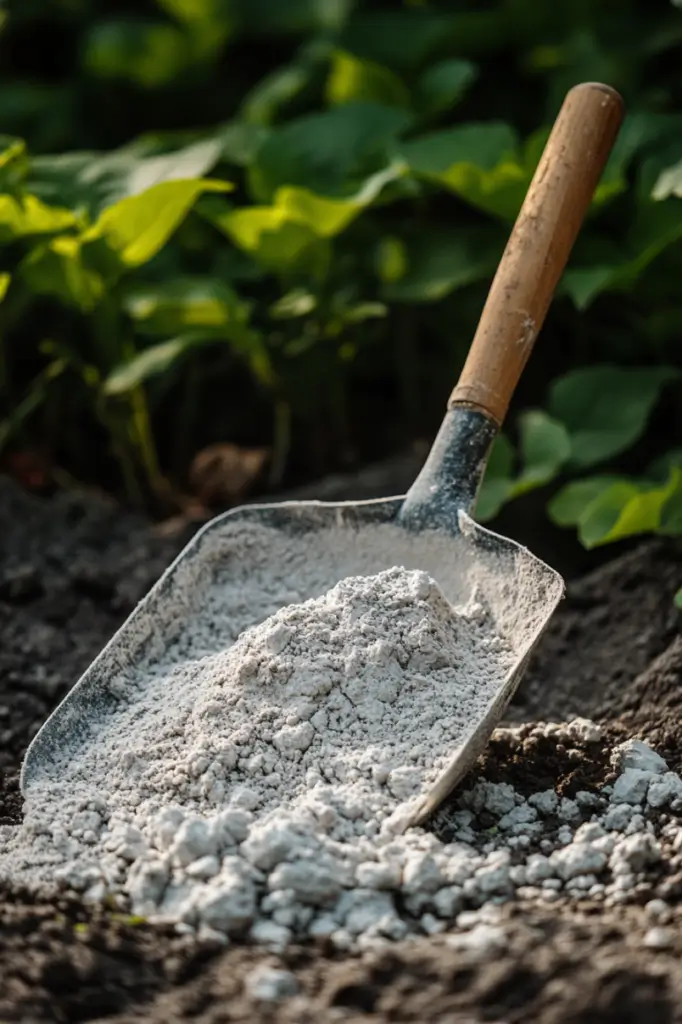
Safety and Precautions
Diatomaceous earth (DE) is a safe and natural pest control option, but it’s important to handle it properly to ensure effectiveness and safety.
Here are some key safety tips and precautions:
Use food-grade DE
Always choose food-grade diatomaceous earth when using it in homes and gardens.
Food-grade DE is safe for people and pets, unlike industrial-grade DE, which contains higher levels of crystalline silica.
Industrial-grade DE can be harmful if inhaled, so it’s best avoided for home use.
Avoid inhalation
Even though food-grade DE is non-toxic, its fine powder can irritate your lungs if inhaled in large amounts.
To protect yourself, wear a mask when applying DE.
This helps prevent you from breathing in the dust and keeps your airways clear.
Keep DE dry
DE is most effective when it’s dry.
When DE gets wet, it loses its ability to absorb moisture and its effectiveness as an insecticide diminishes.
Apply DE on dry days to ensure it remains effective and reapply it after watering your garden or following rainfall to maintain its pest-control properties.
Store properly
To keep DE effective over time, store it in a dry place.
Moisture can cause DE to clump and lose its pest-fighting capabilities.
A sealed container in a cool, dry location is ideal for preserving DE’s quality.
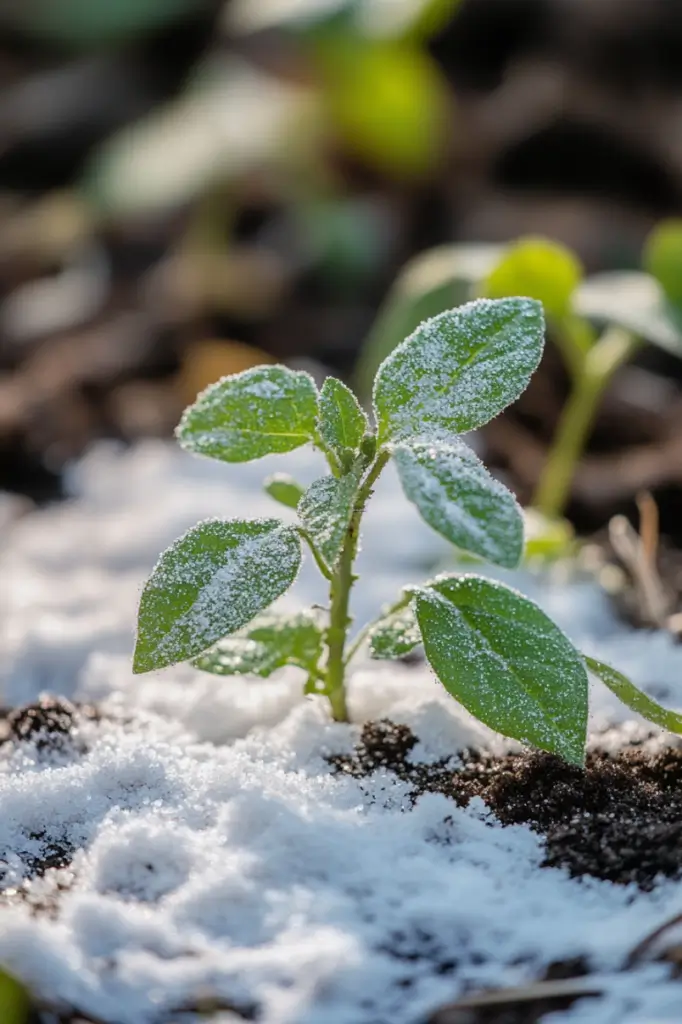
- Read also: Eco-Friendly Pest Control – How To Make a Natural Pesticide
- Read also: Natural Pest Control Methods for Your Vegetable Garden
Conclusion
Diatomaceous earth is a powerful, natural pesticide that offers a safe and effective alternative to chemical solutions.
Its ability to control a wide range of pests, combined with its safety for humans and pets, makes it an excellent choice for eco-conscious individuals.
By understanding how to use DE properly and taking the necessary precautions, you can effectively manage pest problems in your home and garden.
FAQs
Diatomaceous earth is made from the fossilized remains of diatoms, a type of hard-shelled algae. It is rich in silica.
DE kills pests by cutting through their exoskeletons with its microscopic sharp edges, causing them to dehydrate and die.
Reapply DE after watering your garden or after rain. For indoor use, reapply as needed when you notice pests.
Yes, DE is safe for use in gardens. It can control pests like slugs, snails, and insects that harm plants. Just ensure it remains dry for maximum effectiveness.



